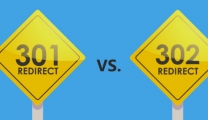What is cost per hire?
Cost per hire (CPH) is a crucial metric that quantifies the total expenses involved in hiring new employees.
This includes everything from advertising job openings to the salaries of the hiring team.
But why is it considered a recruitment staple?
Simply put, it’s about efficiency and budgeting.
Knowing your CPH helps in strategic planning and resource allocation, ensuring that your recruitment process is not only effective but also cost-efficient.
Understanding recruiting costs: Major components of cost per hire
1. Internal recruiting costs
Internal recruiting costs include expenses incurred towards building a team of recruiters for your agency. These costs are often less apparent but significantly impact your average cost per hire. Let’s break down these costs:
Salaries: This includes the wages paid to the recruiting staff involved in the hiring process.
Training costs: These are the expenses associated with training the recruiting team. For example, costs for attending hiring workshops, webinars, or any other training programs aimed at enhancing their recruitment skills.

Productivity loss: A hidden cost that many fail to consider. It represents productivity loss when recruiters are focused on recruitment and miss out on other responsibilities. This cost is more significant in smaller teams where every recruiter has multiple tasks to handle.
Recruitment tools and software: Any internal tools or software used for recruitment, like applicant tracking systems (ATS), also contribute to internal costs. These tools can streamline the recruitment process but come with their own set of expenses.
Employee referral programs: If the company has an employee referral program, the incentives or bonuses paid to employees for successful referrals are part of internal costs.
Internal recruitment events: Costs incurred during internal recruitment events, such as career days, also fall under this category.
2. External recruiting costs
External recruiting costs are the expenses incurred outside your organization.
These are more visible and can vary widely based on the job role and recruitment strategy.
Key external costs include:
Advertising costs: It encompasses the cost of posting job openings on job boards, social media platforms, or in traditional media like newspapers. The cost can vary based on the platform’s reach and the duration of the job ads.
Candidate screening and testing: Expenses related to pre-employment tests, background checks, and skill assessments fall under this category. These are crucial for ensuring the quality of hires but add to the CPH.
Travel and accommodation for candidates: If you’re interviewing candidates from out of town, the cost of their travel and accommodation is part of external costs.
Job fairs and recruitment events: Participating in job fairs or hosting recruitment events involves costs like registration fees, booth setup, and promotional materials.
Consultant and legal fees: Any legal advice or consultancy regarding recruitment, especially for specialized roles, is an external cost.
How to calculate cost per hire?
Calculating CPH goes beyond simple arithmetic; it’s about gaining insights into your recruitment process.
It involves a comprehensive approach, considering both direct and indirect costs.
We’ll delve into a step-by-step guide on how to calculate cost per hire.
A step-by-step breakdown of the formula
Step 1: Compile all expense data for the current period in question from HR documentation, invoices (both internal and external), and financial records.
Step 2: Categorize all the expenses under major heads and organize the same in an Excel sheet in a tabular format. Use Excel formula to sum up the costs automatically as you fill the sheet.
Step 3: Figure out the number of hires made during the relevant time frame.
Step 4: Calculate cost per hire using the straightforward formula mentioned below-

6 different parameters for calculating cost per hire
1. Skill level and specialization
Industries requiring highly specialized skills often face higher cost per hire due to the limited talent pipeline and the need for competitive compensation packages to attract top talent.
2. Turnover rates
Sectors with high turnover rates, like retail and hospitality, might incur lower costs per hire but higher overall recruitment costs due to the need for frequent hiring.

3. Recruitment channels
Some industries rely heavily on professional networking sites and headhunting for specialized roles, which can be more expensive than traditional job postings.
4. Regulatory requirements
Niche job markets like that of healthcare and finance have stringent regulatory requirements, necessitating thorough background checks and longer recruitment processes, thereby increasing CPH.
5. Geographical factors
The location of the industry can also affect the average cost per hire. For instance, recruiting in major metropolitan areas might be more expensive due to higher living costs and competition for talent.
6. Economic and market trends
Economic fluctuations and market trends can significantly impact CPH. For example, during a tech boom, the demand for software developers rises, increasing the cost per hire in the tech industry.












Replies to This Discussion